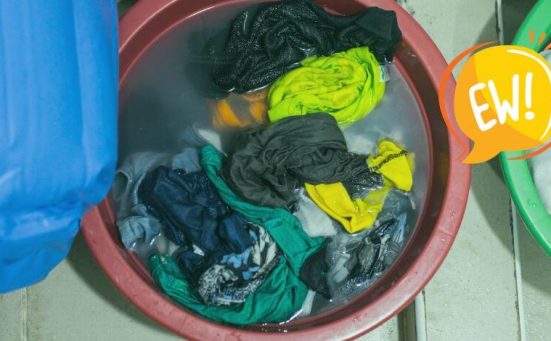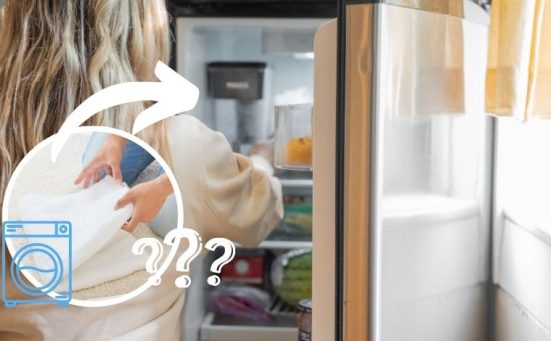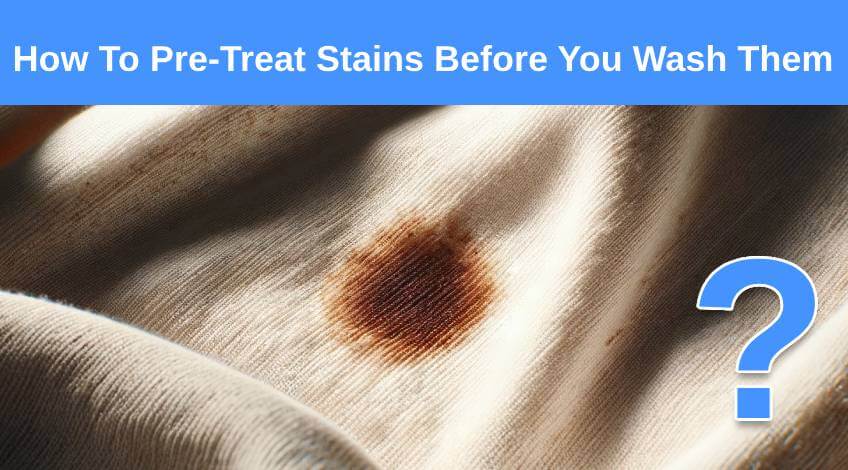
How To Pre-Treat Stains Before You Wash Them
Ever found yourself staring in despair at a fresh stain on your favourite piece of clothing? Don’t worry, as pre-treating will definitely make your problem so much easier to resolve.
Pre-treating stains is a crucial step in maintaining the quality and lifespan of your clothing. Let’s have a look into how you can save your clothes using the effective methods and products we’ll share below.
You Need To Move Quickly
If the accident has just happened, then you can look at it as luck. Timing is everything when it comes to stains. Catching that coffee drip or mud splatter right away can mean the difference between a simple clean-up and a stubborn stain saga.
Blotting (not rubbing) the stain with a clean cloth helps remove excess liquid without spreading it further. For solid spills, gently lift away the residue with a spoon or a blunt butter knife.
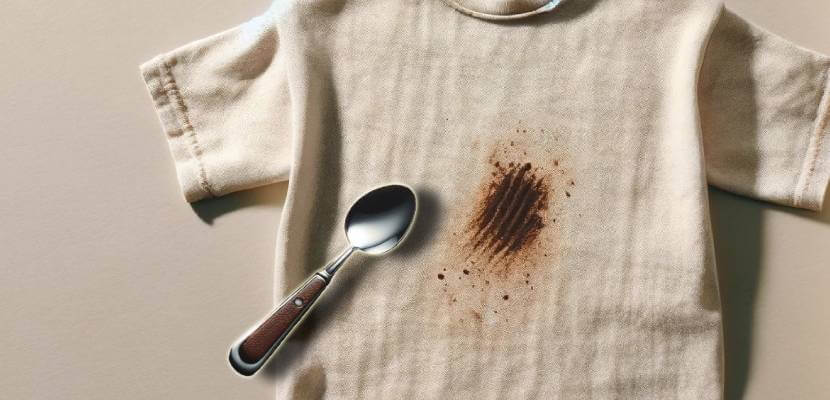
If possible, rinse the affected area under cold water to dilute the stain. These steps can be crucial in preventing the stain from setting before pre-treatment.
Identify The Type Of Stain You’re Dealing With
| Stain Type | How The Stain Looks | How To Pre-Treat |
|---|---|---|
| Water-Based Stains | Usually appears as a clear or coloured mark, often damp | Cold water and washing-up liquid. For stubborn stains, use distilled white vinegar and water. |
| Protein-Based Stains | Can be discoloured or brownish, sometimes with texture | Cold water rinse, then wash as normal for fresh stains. For dried, use bicarbonate of soda paste. |
| Oil-Based Stains | Greasy or darkened patch, possibly with residue | Bicarbonate of soda paste or washing-up liquid for fresh stains. Oxygen bleach for persistent marks. |
| Plant-Based/Dirt Stains | Often green or brown, ingrained in the fabric | Warm water and washing-up liquid soak. White vinegar for persistence. Rubbing alcohol for grass. |
| Ink-Based Stains | Sharp, vivid marks, potentially spreading | Rubbing alcohol, hand sanitiser, or acetone. |
| Mould/Mildew Stains | Discoloured spots with a distinct smell | Bleach and water solution for white clothes. White vinegar or oxygen bleach for coloured fabrics. |
When you’re dealing with stains, the first thing you’ll need to do is identify where they’re from. Knowing the composition of the stain will ultimately allow you to deal with it more effectively, as each type will require a different approach for effective pre-treatment.
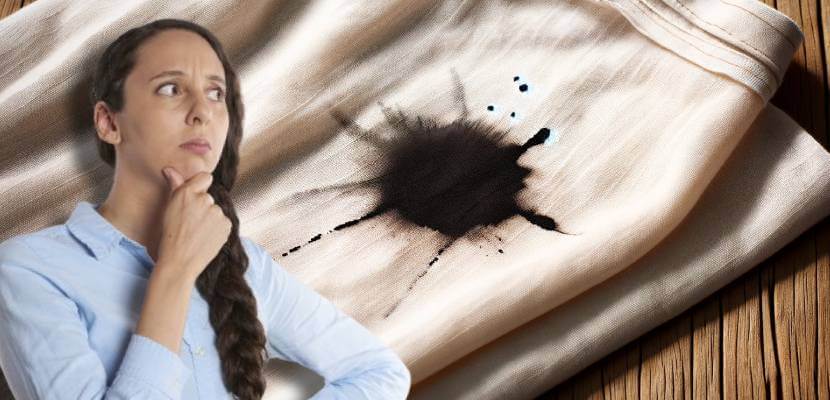
Here are the different stain categories, and the best ways to remove them:
Water-Based Stains
Beverages like tea, coffee, and even sodas fall into this category. They are best removed with a solution of cold water and a bit of washing-up liquid.
For more stubborn stains, use equal parts of distilled white vinegar and water.
Protein-Based Stains
These include bodily fluids such as blood, sweat, vomit, and faeces. Cold water for rinsing, then washing as normal, often removes these stains, provided they are still fresh.
For dried stains, a shop-bought remover or bicarbonate of soda and water paste can be effective.
Oil-Based Stains
Stains from food grease, butter, makeup, and petrol are best addressed using a bicarbonate of soda paste or washing-up liquid for fresh stains.
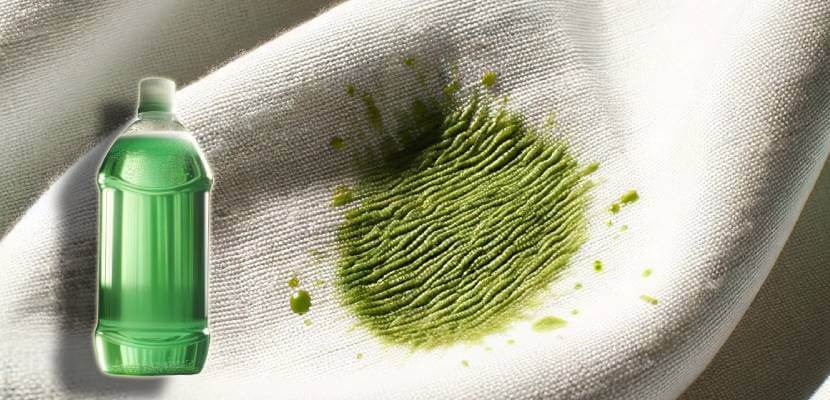
For more persistent marks, don’t hesitate to use oxygen bleach.
SEE ALSO: How To Remove Chocolate Stains From Clothes
Plant-Based Or Dirt Stains
Fruits, vegetables, grass, and dirt can leave tough stains, especially on white clothing. Soak the fabric in a solution of warm water and washing-up liquid. If the stain persists, tackle it with white vinegar. Grass stains respond well to rubbing alcohol.
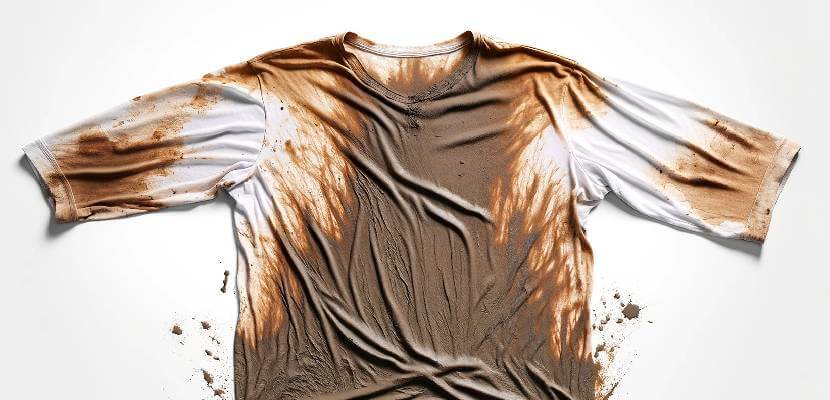
SEE ALSO: How To Remove Avocado Stains From Clothes
Ink-Based Stains
Ink stains from markers and pens can be particularly troublesome. They are best treated with rubbing alcohol, hand sanitiser, or acetone as a pre-treatment solution.
SEE ALSO: How To Remove Ink Stains From Clothes
Mould Or Mildew Stains
These are best removed with a solution of bleach and water. Make sure to check the care labels of your fabric to prevent permanent damage.
Also, bleach should only be used on white clothes. For non-bleachable fabrics, white vinegar can be an alternative, or get an oxygen bleach variant that’s safe for coloured clothing.
- DOUBLE DUTY POWER -Whitens and removes tough stains in one convenient scoop.
- GENTLE FABRIC CARE - Whitens and removes tough stains in one convenient scoop.
Additional Tips for Effective Stain Removal
Remember, the sooner you jump into action, the better your chances are of saying goodbye to that ugly stain for good.
Here are bonus tips you can use to win against those pesky stains while keeping your clothes in great shape:
- Using hot water on stains will just make them cling harder to the fabric, which may set them permanently. If you’re using your washing machine, go for cold washes!
- Air dry your fabrics once they’re done in the wash. Not only will it be economical, but it is also a gentler way of removing the moisture on the garment that probably had to undergo a bunch of chemicals in the pre-treatment process.
- And finally, always patch-test any cleaning solution on an inconspicuous area of the fabric, especially for delicate materials.
Do you have questions? Feel free to leave a comment below!
Frequently Asked Questions
Pre-treating stains means applying a stain-removing solution or technique to a stained garment before washing it, in order to improve the chances of removing the stain completely.
Yes, you should pre-treat stains before washing garments, as this gives you the best chance of fully removing the stains. Pre-treating helps loosen and break down stains so they can be washed away more easily.
Yes, you can use laundry detergent or washing up liquid as part of a pre-treatment solution for many types of stains. Detergents help dissolve and lift stains away from the fabric.
Yes, vinegar is an effective pre-treatment for many types of stains. The acetic acid in vinegar helps break down stain compounds. It works well on coffee, tea, wine, and fruit stains.
Yes, bicarbonate of soda can be used to pre-treat many stains, including oils, grease, and proteins. It helps draw out and absorb stains from fabric. Make a paste with water and apply it to the stain before washing.
Also, follow us on Pinterest ...


